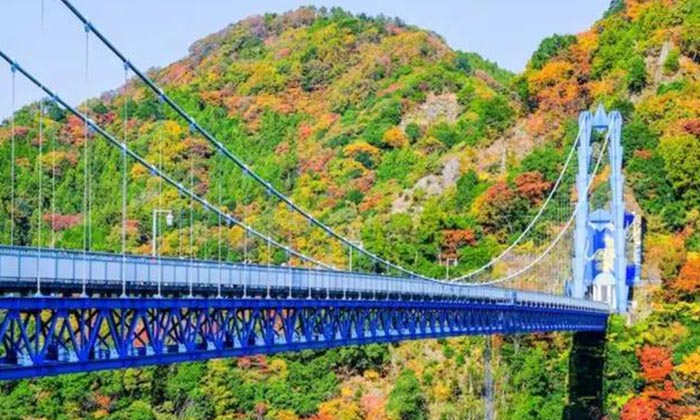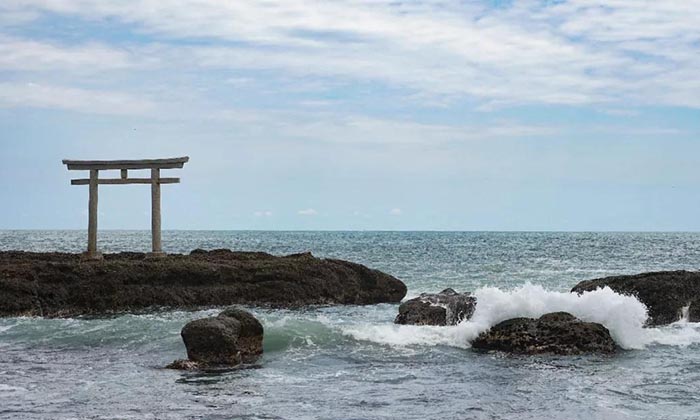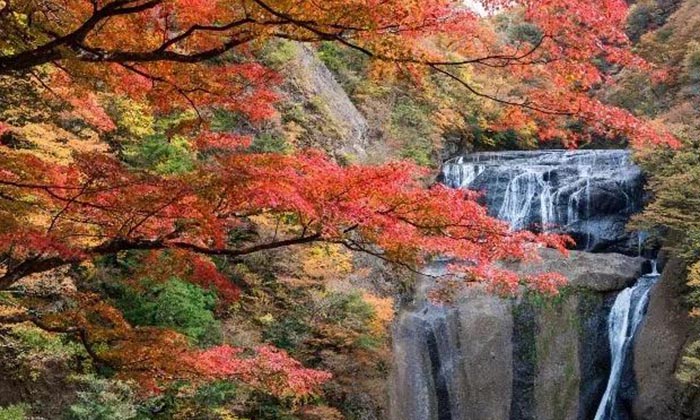Tokyo to Ibaraki Limousine Service
What is the best way to Ibaraki from Tokyo? On the east side facing the Pacific Ocean, Ibaraki has a 190 Km coast. Famous attractions in Ibaraki include Mount Tsukuba, Kairakuen-a plum blossom viewing spot, and Lake kasumigaura-the second largest lake in Japan. From Tokyo to Ibaraki is about 40 Km, an hour drive. Many travelers prefer staying in Ibaraki for 1-3 days. Beside public transportation, you can use private transfer service. A door to door car rental service with driver is probably the best option. Our private transfer service at Narita Airport has professional and friendly drivers. If you reserve in advance, we can arrange a driver who speaks simple English. We are very happy to provide transfer and travel booking services for tourists. For the details of prices, please visit: Tokyo Chauffeur Services.

What to See in Ibaraki
Kairakuen: was constructed in 1842 by Tokugawa Nariaki and is famous for the plum blossom. There are approximately 3000 plum trees in the garden. Kenroku-en Garden in Kairakuen and Ishikawa, and Korakuen Amusement Park in Okayama are known as the top three gardens in Japan. Beside plum trees, visitors can also find different plants the garden all year round, including cedar forests, bamboo forests, cherry blossoms, azaleas, and peperomia.
Hitachi Seaside Park: is 3.5 hectares in total and has become one of the most remarkable tourist destinations in the country. The park is filled with narcissus and tulips in spring; nemophila, rose, and sun flower in summer; kochia and cosmos in fall. Other than enjoying the flowers, tourists can bike, barbecue, and play sports in the flower sea.
Mount Tsukuba: Mount Tsukuba is one of the top 100 mountains in Japan with a long history. The top of Mount Tsukuba is the best viewing point, and you may see Kanto Plain, Mount Fuji, and the skyscrapers in Tokyo on a sunny day.
Lake kasumigaura: is the second largest lake in Japan. The Lake kasumigaura sailing serves as the iconic landscape, which is especially pretty in summer. Tourist can ride a sightseeing boat and enjoy cymbidium in summer.

Fukuroda no Taki is one of the top three waterfalls in Japan, with a height of 120 m and width of 73 meters. The waterfall sometimes freezes in the winter. Fukuroda no Taki participated contest on the top hundred waterfalls in Japan and won first place in 1990.
Kashima Shrine: Kashima Shrine was constructed in 660 BC. As the main shrine of all 600 Kashima Shrines around the country, it holds a very significant status. Entering through the red gate into the main mall, visitors can find the oldest and longest sword plus 300 other historical remains, many of which are national treasures, in the exhibition.
Kasama Inari Shrine: is believed to be constructed in 661. Together with Fushimi Inari Shrine in Kyoto and Yutoku Inari Shrine in Saga Prefecture, Kasama Inari Shrine is one of the top three Inari shrines in Japan. The garden is planted with various flowers and trees. During spring and summer, the shrine is especially elegant and tranquil. Thus, it is a popular tourist destination.

Ryujinkyo: was formed by the Ryujin River eroding the forest. It has become a major tourist attraction. The most iconic spot is the 375 meters long suspension bridge, only allowed for pedestrians. Travelers can see the beautiful landscape any season of the year.
How to Get to Ibaraki from Tokyo
Mito station is the heart of the public transportation in Ibaraki. You can take an express bus at Tokyo station or Narita Airport to Ibaraki. You can also use the JR Joban line Tokiwa or Hitachi at the Tokyo station to Ibaraki.
What is the best way to Ibaraki from Tokyo? On the east side facing the Pacific Ocean, Ibaraki has a 190 Km coast. Famous attractions in Ibaraki include Mount Tsukuba, Kairakuen-a plum blossom viewing spot, and Lake kasumigaura-the second largest lake in Japan. From Tokyo to Ibaraki is about 40 Km, an hour drive. Many travelers prefer staying in Ibaraki for 1-3 days. Beside public transportation, you can use private transfer service. A door to door car rental service with driver is probably the best option. Our private transfer service at Narita Airport has professional and friendly drivers. If you reserve in advance, we can arrange a driver who speaks simple English. We are very happy to provide transfer and travel booking services for tourists. For the details of prices, please visit: Tokyo Chauffeur Services.

Tokyo Narita Airport to Ibaraki
Our company provides safe and affordable private chauffeurs for foreign visitors. Some of your private drivers can speak basic English, and will escort you to Ibaraki from Tokyo. Whether you are going to Ibaraki from Narita Airport or hotels, private transfer and private tours are the most convenient and affordable way. For more information, please contact our Japan limousine service specialists.What to See in Ibaraki
Kairakuen: was constructed in 1842 by Tokugawa Nariaki and is famous for the plum blossom. There are approximately 3000 plum trees in the garden. Kenroku-en Garden in Kairakuen and Ishikawa, and Korakuen Amusement Park in Okayama are known as the top three gardens in Japan. Beside plum trees, visitors can also find different plants the garden all year round, including cedar forests, bamboo forests, cherry blossoms, azaleas, and peperomia.
Hitachi Seaside Park: is 3.5 hectares in total and has become one of the most remarkable tourist destinations in the country. The park is filled with narcissus and tulips in spring; nemophila, rose, and sun flower in summer; kochia and cosmos in fall. Other than enjoying the flowers, tourists can bike, barbecue, and play sports in the flower sea.
Mount Tsukuba: Mount Tsukuba is one of the top 100 mountains in Japan with a long history. The top of Mount Tsukuba is the best viewing point, and you may see Kanto Plain, Mount Fuji, and the skyscrapers in Tokyo on a sunny day.
Lake kasumigaura: is the second largest lake in Japan. The Lake kasumigaura sailing serves as the iconic landscape, which is especially pretty in summer. Tourist can ride a sightseeing boat and enjoy cymbidium in summer.

Fukuroda no Taki is one of the top three waterfalls in Japan, with a height of 120 m and width of 73 meters. The waterfall sometimes freezes in the winter. Fukuroda no Taki participated contest on the top hundred waterfalls in Japan and won first place in 1990.
Kashima Shrine: Kashima Shrine was constructed in 660 BC. As the main shrine of all 600 Kashima Shrines around the country, it holds a very significant status. Entering through the red gate into the main mall, visitors can find the oldest and longest sword plus 300 other historical remains, many of which are national treasures, in the exhibition.
Kasama Inari Shrine: is believed to be constructed in 661. Together with Fushimi Inari Shrine in Kyoto and Yutoku Inari Shrine in Saga Prefecture, Kasama Inari Shrine is one of the top three Inari shrines in Japan. The garden is planted with various flowers and trees. During spring and summer, the shrine is especially elegant and tranquil. Thus, it is a popular tourist destination.

Ryujinkyo: was formed by the Ryujin River eroding the forest. It has become a major tourist attraction. The most iconic spot is the 375 meters long suspension bridge, only allowed for pedestrians. Travelers can see the beautiful landscape any season of the year.
How to Get to Ibaraki from Tokyo
Mito station is the heart of the public transportation in Ibaraki. You can take an express bus at Tokyo station or Narita Airport to Ibaraki. You can also use the JR Joban line Tokiwa or Hitachi at the Tokyo station to Ibaraki.
Related Articles You May Like
Most Frequently Asked Questions
-
How far is Tokyo from Ibaraki?From Tokyo city center to Ibaraki is about 40 Km, an hour drive. Many travelers prefer staying in Ibaraki for 1-3 days. Beside public transportation, you can use private transfer service.
-
How to get to Ibaraki from Tokyo by public transportation?Mito station is the heart of the public transportation in Ibaraki. You can take an express bus at Tokyo station or Narita airport to Ibaraki. You can also use the JR Joban line Tokiwa or Hitachi at the Tokyo station to Ibaraki.
-
Do you provide private transfer service from Tokyo to Ibaraki?Yes, we can provide private transfer service. Our private transfer service has professional and friendly drivers. If you reserve in advance, we can arrange a driver who speaks simple English. We provide different car types to meet your need: 7-seats van, 10-seats van, 14-seats van, and 20 seats coaster bus.
-
What to do in Ibaraki?On the east side facing the Pacific Ocean, Ibaraki has a 190 Km coast. Famous attractions in Ibaraki include Mount Tsukuba, Kairakuen-a plum blossom viewing spot, and Lake kasumigaura – the second largest lake in Japan.
-
What attractions in Ibaraki are worth visiting?Kairakuen, Hitachi Seaside Park, Mount Tsukuba, Lake kasumigaura, Fukuuroda no Taki, Kashima Shrine, Ushiku Daibutsu, Kasama Inari Shrine, and Ryujinkyo are all worth visiting. There are a lot of natural landscape and historical sites offered by Ibaraki.
-
What places are recommended for viewing flower in Ibaraki?Kairakuen is famous for the plum blossom. Beside plum trees, visitors can also find different plants the garden all year round, including cedar forests, bamboo forests, cherry blossoms, azaleas, and peperomia. Hitachi Seaside Park is filled with narcissus and tulips in spring; nemophila, rose, and sun flower in summer; kochia and cosmos in fall.
-
What to do in Ibaraki during summer?Hitachi Seaside Park is filled with nemophila, rose, and sun flower in summer. Other than enjoying the flowers, tourists can bike, barbecue, and play sports. You can also visit Lake kasumigaura, where tourist can ride a sightseeing boat and enjoy cymbidium in summer.
-
Where to see maple leaves in Ibaraki during fall?Ryujinkyo was formed by the Ryujin River eroding the forest. It has become a major tourist attraction. The most iconic spot is the 375 meters long suspension bridge, only allowed for pedestrians. Travelers can see the maple leaves in fall.
Japan Office
- Tel: +81 50-3701-6391
- Email: info@japanholiday.com
- Working Hours: 8am-7pm, (Japan)
USA Office
- Tel: +1-6265617117
- Email: info@japanholiday.com
- Working Hours: 8am-7pm, Pacific Time

